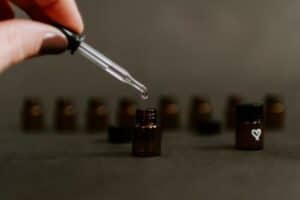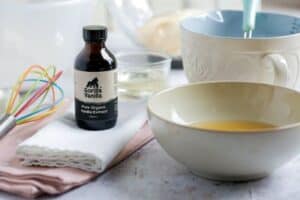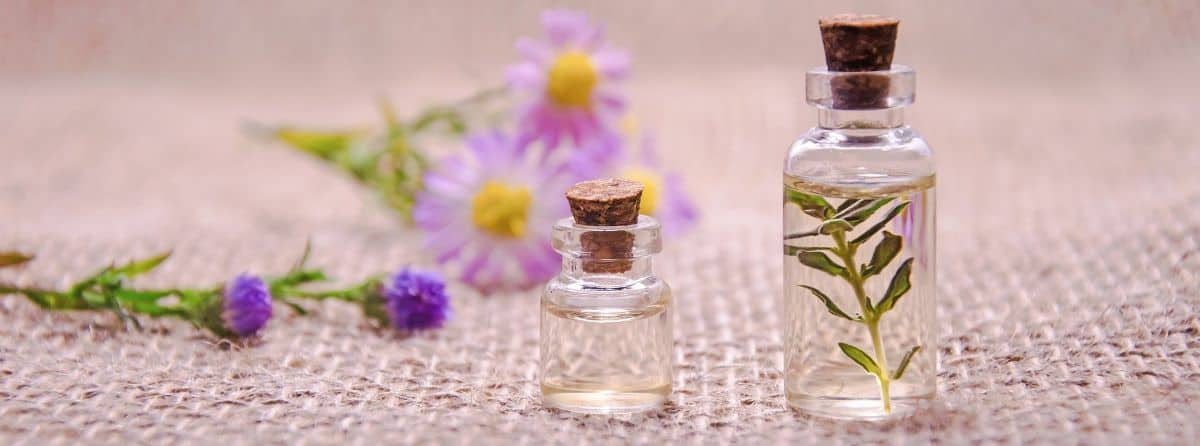How to Make Your Own Air Freshener With Essential Oils
Before the age of mass production and marketing, humans were able to make their cleaning products from ingredients that they harvested from nature. Many cleaning supplies that we buy today are filled with harsh chemicals that leave toxic residue behind on surfaces where children and pets can ingest them. That is why making your air freshener with essential oils is a great idea! Below, we will walk you through the steps to make yours.

Essential Oils – What Are They?
Essential oils are concentrated volatile plant oils with various bioactive properties. They are used in aromatherapy for their pleasant smell, but also to enhance mood and well-being.
These oils can usually be found in a grocery store or purchased from a specialty retailer.
What Are Essential Oils Made Of?
Essential oil is not the same as “oil”. Oils are made up of fat or lipids that can cause harm when inhaled over a long period of time because they coat the lungs.
However, essential oils are made up of volatile organic molecules which evaporate quickly when exposed to air, making them safe for use without posing risk to users.
Why Use Essential Oils?
Essential oils can be easily inhaled or applied topically for both their aromatic benefits and therapeutic properties.
Some people use them for mood or relaxation enhancement, while others are just fascinated by the possibility of utilizing plants to improve their quality of life.
Health Benefits Of Essential Oils
Using essential oils for an aromatherapy diffuser on your desk at work can improve focus and concentration while you’re working; studies on the effects of peppermint oil show that inhaling it increased alertness and reduced fatigue in healthy participants.
Another study found that inhalation of essential oils such as lavender and rosemary reduced test anxiety in undergraduate students. Since stress is the root cause of many health problems, one could say that using an aromatherapy diffuser with these scents could help prevent or reduce your risk of getting sick.
Finally, other oils have been shown to help boost immune system function. For instance, a study found that taking eucalyptus oil orally helps clear excess mucous from the lungs. It also reduces fever and has antibacterial properties.
So next time you’re feeling stressed out in your office cubicle, don’t break into a cold sweat; grab an essential oil diffuser instead!
Essential Oils And Air Fresheners
As you can see, there is a lot you can do with essential oils, and making your air freshener is one of them! Essential oils have been used for centuries as natural fragrances in homes and perfumes, but now they are being used as a natural alternative to chemical-filled store-bought air fresheners.
Essential oils are natural, aromatic compounds found in plants. They are used for both cosmetic and therapeutic purposes, including household air fresheners. In other words, they add the actual “scent” of your air freshener.
Essential oils can come from almost any plant. Citrus fruits have been used for centuries because the citrus smell is so refreshing and invigorating. The orange aroma provides an uplifting experience that is mentally stimulating at the same time.
In contrast, lavender oil smells pleasant and soothing, which creates a calming effect. This makes sense since lavender has been used by the French as a tranquilizer.
They can be used in a variety of ways, from putting them in a diffuser, adding them to water and spraying it, making your lotion bars with essential oils, or my favorite is mixing them with baking soda and sprinkling it around the house!

Benefits Of Essential Oils As Air Fresheners
There are several benefits to using your homemade air fresheners, including:
- All-natural ingredients without harmful synthetic fragrances or toxic chemicals
- Ability to customize them for yourself and specific areas/purposes
- The ability to create various scents depending on your mood or taste
- They’re effective at masking odors which can improve the smell of just about any area you put them in, from your home or car to gym bags!
What Are Some Common Essential Oils?
The following list is a partial compilation of essential oils with either known therapeutic properties or common uses:
- Lavender oil – relaxant, antidepressant
- Eucalyptus oil – decongestant
- Tea tree oil (melaleuca) – antiviral , antifungal. Used to kill germs and bacteria that can cause airway infections.
- Peppermint oil – expectorant, a mild anesthetic, stimulant
- Jasmine oil – hypnotic (sleep-inducing)
- Clary sage oil– nervine (calms nerves), antiseptic, emmenagogue (stimulates menstrual flow)
- Ylang-ylang oil – analgesic , antidepressant , aphrodisiac
- Rose oil – antidepressant, antispasmodic, hypotensive (lowers blood pressure), sedative
- Sandalwood oil – anticoagulant (blood thinner), anti-inflammatory, diuretic
- Frankincense oil – hepatoprotective (protects the liver), anticancer, antimicrobial, expectorant
- Patchouli oil – deodorant, tranquilizer (sedative)
- Oregano Oil – Antibacterial and Antifungal. Kills bacteria that cause tooth decay, gum disease, and ulcers. Oregano oil may cause skin irritations in some people.
- Cinnamon oil – antibacterial, antimicrobial, antifungal
- Ginger oil – analgesic (pain reliever), anticoagulant (blood thinner)
- Thyme oil – expectorant, diuretic (increases urine production)
- Basil Oil – Antibacterial and Anti-inflammatory. Kills germs that cause ulcers, gum disease, throat infections, urinary tract infections, and pneumonia. Basil can also help reduce inflammation in arthritis sufferers.
- Castor oil – purgative (laxative), abrasive agent for soaps or cosmetics
DIY Air Freshener Recipes
Here are some recipes for different types of homemade air fresheners:
Non-Toxic Fridge Refreshers
What you’ll need:
- 1 tablespoon baking soda
- 2 tablespoons distilled water
- 10 drops lavender oil (or other essential oils like lemon, orange, etc.)
Instructions: Mix everything in a small (6 oz) spray bottle. Shake well before each use.
To use it on your fridge, simply spritz the air and surfaces inside your fridge with the solution after wiping them clean. You can wipe out any spills or splatters while you’re at it too. Allow to air dry and store your refrigerator as normal! The same effect can be obtained by spraying a cut lemon with a few drops of citrus oil.
Natural Air Freshening Sprays
What you’ll need:
- 1 cup distilled water
- 20-25 drops of your chosen essential oils
Instructions: Mix everything in a small (6 oz) spray bottle. Shake well before each use.
To use it, simply spritz the air & surfaces inside any given area with this solution after wiping them clean.
You can wipe out any spills or splatters while you’re at it too. Allow to air dry and store as normal!
Different recipes call for different ingredients so feel free to adjust things according to your preference. Some good combinations include:
- Purifying – 15 drops eucalyptus oil, 5 drops tea tree oil, 5 drops peppermint oil
- Lavender – 20 drops lavender oil, 5 drops of vanilla extract
- Sweet Orange – 15 drops orange oil, 10 drops vanilla extract
Natural Car Air Fresheners
What you’ll need:
- Essential oils
- Fabric scraps or paper towels to use as your air freshener.
Instructions: Simply place a few small drops of your chosen essential oil onto the fabric/paper product & tada! The scents are released naturally over time because the liquid is absorbed into the material. You can reuse them as often as you’d like by simply adding more essential oils when needed.
Quick Notes On Different Types Of Ingredients
Here are some things to know about common DIY air freshener ingredients:
Baking soda
Baking soda has many different uses, but one of its most unique is the ability to remove odors from the air. For centuries, people have mixed baking soda with water and other ingredients to make an all-natural air freshener.
Baking soda works by neutralizing acids in the air that are released by odiferous particles. When you smell something bad, it’s generally because there is a molecule floating through the air which stimulates your olfactory receptors and triggers your brain to think “stinky.”
Baking soda removes these molecules and leaves only fresh scents behind.
Distilled Water
The function of distilled water in an air freshener is to emit scented mist into the air. It also cleanses and prevents the growth of mold, bacteria, & fungus.
When mixed with essential oils, distilled water helps the scent last longer. It is also easier to clean up any spills than tap water, which contains minerals that can damage certain surfaces.
Fabric Scraps
These are good because they also let the air freshener room diffuse itself. The more often you use them, the stronger your homemade air fresheners will be!
Vanilla Extract
This is simply great smelling and awesome at masking unpleasant smells.

Conclusion
As you can see creating your air fresheners is pretty simple & straightforward. And the best part is that you have full control over how they will turn out which means you can perfect the recipes until they are just right for your specific needs & preferences.
There are so many options to choose from when it comes to scent combinations and different types of essential oils, so get creative and experiment! This is a great way to use up any essential oils or scented items you may have laying around the house.
Feel free to get creative with scents and ingredients. You could also add in dried flowers or lavender buds for decoration/garnish if desired.

